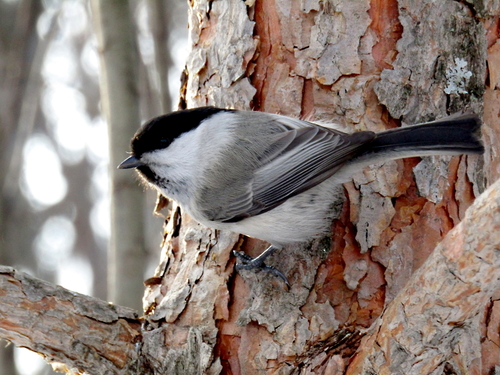
Willow Tit
The Willow Tit (Poecile montanus) is a small passerine bird in the tit family, Paridae. It is known for its remarkable ability to excavate its own nest cavities, a behavior relatively rare among tits. This species plays a vital ecological role in controlling insect populations within its woodland habitats. While not globally threatened, it faces localized declines due to habitat loss and changes in woodland management practices. The Willow Tit has no widely recognized cultural significance, but it is a cherished sight for birdwatchers across its range.
11.5-12 cm
Length
17-20.5 cm
Wingspan
Least Concern
Conservation Status
Distribution
The Willow Tit has a wide distribution across Europe and Asia, extending from the British Isles eastward across Scandinavia, Russia, and Siberia to Japan. It is generally non-migratory, although some populations in the northernmost parts of its range may move southwards in winter. Altitudinally, it ranges from sea level to montane forests.
Lifespan
The average lifespan in the wild is 2-3 years, although individuals can live longer.
Willow Tit's Habitat
Habitat Types
Deciduous woodlands, Mixed forests, Coniferous forests (especially with birch or alder), Wet woodlands, Riverine forests
Climate Zones
Temperate, Boreal
Adaptations
Willow Tits prefer damp woodlands with decaying trees, which provide suitable sites for nest excavation. Their strong bills and claws are well-suited for this task. They also have good cold tolerance which allows them to inhabit the Boreal climate zone.
Variations
Numerous subspecies are recognized across the Willow Tit's vast range, differing subtly in plumage coloration and size. For example, birds in Britain (P. m. kleinschmidti) are generally browner than those in continental Europe (P. m. montanus).
Appearance
Breeding Plumage
Plumage is similar year-round.
Seasonal Feather Changes
No significant seasonal variation.
Sex Based Plumage Differences
Males and females are visually indistinguishable.
Notable Features
Black cap extending to the nape, Small black bib, Pale cheeks, Brownish-grey upperparts, Pale buff underparts
Diet and Feeding
Primary Foods
Insects, Spiders, Seeds, Berries (occasionally)
Foraging Behavior
Willow Tits are active foragers, gleaning insects and spiders from branches, leaves, and tree bark. They often hang upside down to reach prey. They also store food, particularly seeds, in crevices for later consumption.
Specializations
Their strong bill allows them to excavate wood to reach insect larvae. They are also adept at handling small seeds.
Seasonal Diet Variations
In summer, the diet consists primarily of insects and spiders. In winter, seeds and cached food become more important.
Behavior
Social Structure
Willow Tits are generally territorial during the breeding season, forming pairs. Outside of breeding, they may form small flocks, sometimes joining mixed-species foraging flocks.
Communication
A distinctive, nasal 'chick-a-dee-dee' call, A high-pitched 'zee' call, Various other chattering and buzzing calls
Migration
Generally resident, with some short-distance movements in winter, particularly by young birds.
Territorial or Group Behaviors
Defends breeding territory vigorously against other Willow Tits. Will also defend food sources in winter.
Conservation
Threats
Habitat loss (due to deforestation and intensive forestry practices), Loss of dead and decaying wood, Competition with other tit species (especially in managed woodlands)
Protection Programs
Some habitat protection through national parks and reserves, Promotion of sustainable forestry practices (e.g., retaining dead wood)
Local National Laws
Protected under various national wildlife legislation in many European countries.
Population Trend
Decreasing in some regions, particularly in Western Europe.
Population Estimates
The global population is estimated to be in the millions, but precise figures are difficult to obtain.
Interesting Facts
Willow Tits excavate a new nest cavity each year.
This is unusual among tits, most of which use existing holes or nest boxes.
They are very efficient food cachers.
They store large quantities of seeds and insects in autumn, remembering the locations for later retrieval.
Willow tit populations have declined significantly in the UK.
It is now a Red List species of high conservation concern in the UK.
Faqs about Willow Tit
How can I tell a Willow Tit from a Marsh Tit?
Willow Tits have a larger, 'sooty' black bib, a less glossy cap, and a pale wing panel (often subtle). Their calls are also distinctively different.
Do Willow Tits use nest boxes?
They rarely use standard nest boxes, preferring to excavate their own cavities. However, they may use boxes filled with wood shavings or sawdust.
What can I do to help Willow Tits?
Support sustainable forestry practices, leave dead and decaying wood in woodlands, and consider providing a nest box filled with wood shavings.
Copyright @ Nature Style Limited. All Rights Reserved.
 English
English